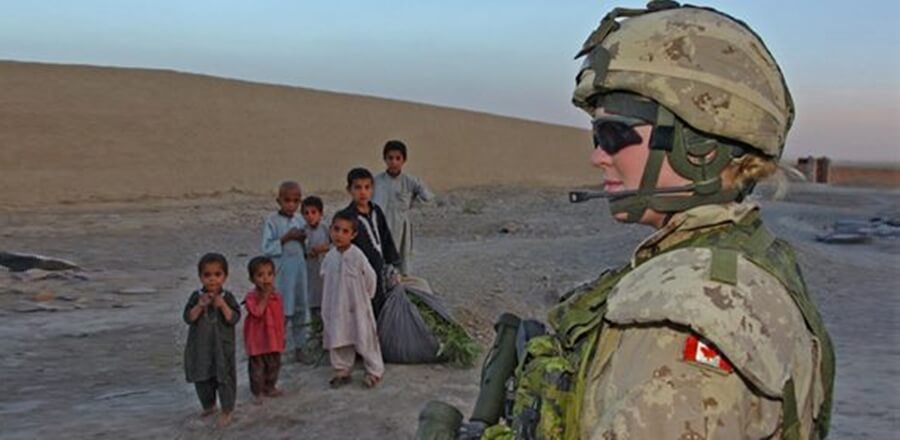
1989: CAF Integrates Women
In 1989, four members of the Canadian Armed Forces filed a human rights complaint accusing the military of gender discrimination. At that point, the 8,300 women serving with the Armed Forces were restricted to administrative and support jobs. In response to their complaint, the Canadian Human Rights Tribunal directed the Armed Forces to fully integrate women into all military environments and roles over the course of the next ten years. Shortly thereafter, Private Heather Erxleben’s graduation from the Princess Patricia’s Canadian Light Infantry Battle School in 1989 positively proved that women could perform the same tasks as their male counterparts.
Erxleben and sixteen other female volunteers were enrolled in an un-adapted, standard infantry training course alongside male recruits. For four months, they endured the same punishing physical training regimen. They carried heavy rucksacks on long marches, practiced unarmed combat, learned to drive tanks, and perfected their shooting. Erxleben was the only woman to graduate from the course and thus, became the first female regular force infantry soldier. However, she was quick to stress, “I’m here to be a soldier, not a female or a male.”
Canada was one of the first countries to fully integrate women into the Armed Forces and serves as a model for other countries’ military gender-integration initiatives. While several veterans initially opposed the prospect of serving alongside women, most Canadian soldiers have grown to appreciate the presence of female soldiers today. Lieutenant-Colonel Derek Basinger argues, “Women bring aspects [to the Armed Forces] that are different which helps bond the troops together.”
To see the “Historical Milestones of Women in the Canadian Armed Forces” (7 March 2018: Canadian Forces), please view THIS page. There is also this extensive 2014 backgrounder: “Women in the Canadian Forces“.
Main photo: Corporal Venessa Larter and members of the Canadian Forces (not shown) conducting a patrol in Afghanistan village during May 2006. (Photo: Department of National Defence Canada)

